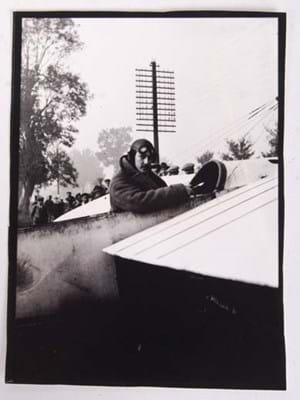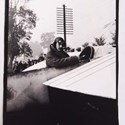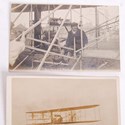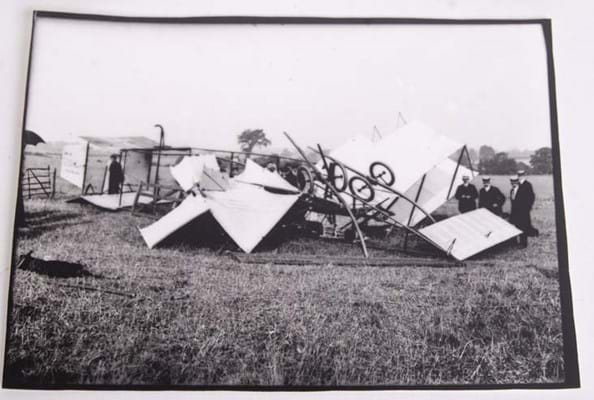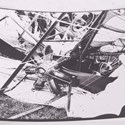Instead, in a brilliantly British idiosyncratic moment, one William Barnard Rhodes-Moorhouse flew his new Bleriot aeroplane to Northampton, picked up a small consignment of shoes from Barratt’s and returned home.
A fascinating photograph on offer at East Bristol Auctions Military, History & Transportation Sale on February 16 shows that very flight. It is part of a small collection of early aviation photographs set to go under the hammer.
The group – totalling just six images to be sold in three separate lots – shows early aircraft around the start of the century, mostly relating to Milton Keynes and surrounding areas.
“We received an email from a gentleman who had some old aircraft photographs,” says Andrew Stowe of East Bristol Auctions, “but it wasn’t until we dug deeper into the pictures that we realised they were quite significant.”
The Moorhouse glass plate negative photograph, taken c.1909, is estimated at £200-300. From an accompanying newspaper article (copy): “On the day William Moorhouse was granted his Royal Aero Club Certificate he flew to Northampton to collect a consignment of shoes from Messrs Barratt's for delivery to Hendon. This was hailed… as the first commercial use of an aeroplane.”
The image depicts Moorhouse looking back at the photographer while seated in his Bleriot aeroplane with an assembled crowd gathered behind. The lot is accompanied by some contact-prints taken of the negative in the mid 1970s by a family member.
Stowe adds: “Just a few years after this flight, Moorhouse went on to become the first ever airman to be awarded the Victoria Cross.”
On a mission to bomb a railway line in on April 26, 1915, Moorhouse lowered his plane to get a good view of his target and was met with heavy fire from the ground. Severely injured, he then turned for home and was met with yet more gun fire, wounding him further.
Limping over a hedge, he is said to have made a ‘perfect landing’ when returning to his comrades. His hand and stomach had both been blown away, but he insisted on filling out his report before he received medical attention. The intelligence he gathered was deemed highly valuable, and he was awarded the VC. Unfortunately, Moorhouse died within a few hours and his medal was given posthumously.
First aeroplane death
Two other images contained within the group tell an entirely different tale of early aviation.
“As the gentleman was showing me the collection,” adds Stowe, “these two photographs fell out from an old envelope, and they immediately sparked my interest.”
One of the Edwardian real photo postcards, marked ‘taken three minutes before the accident’, was later discovered to show the final moments of Charles Rolls (of Rolls Royce) before his fatal air crash after taking off from Hengistbury Airfield, Bournemouth, on the morning of July 12, 1910 – what is believed to be the first aeroplane-related death on record.
“Images from his crash are very rare - with some newspaper reports from the time claiming that aides smashed reporter’s cameras so they were unable to photograph the body of Charles Rolls,” says Stowe. “The first image shows Rolls seated in his box plane prior to take-off. There’s no seat, no harness, just this gentleman in a cap perched next to this big engine.”
The second picture shows a somewhat blurry image of Rolls taking off in the field. “It’s quite likely the last image taken of Rolls alive,” adds Stowe.
The final set of these photographs depicts biplane crashes in the Milton Keynes area in 1911.
All these photographs belonged to Albert William Eley, Mayor of Milton Keynes in 1978, who had a keen interest in aviation history, particularly in the local area.
VC on display
Rhodes-Moorhouse's VC is on public display at the Imperial War Museum in London as part of Lord Ashcroft's medals gallery.
Lord Ashcroft wrote of his bravery in a Telegraph article in 2013, saying: "I bought Rhodes-Moorhouse’s gallantry and service medals at Sotheby’s in 1990 and they are on display at the Imperial War Museum. Also on display is the pin from the vital 100lb bomb that Rhodes-Moorhouse dropped."


